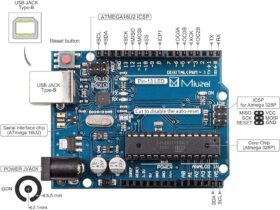 Defining a Drum Pump
Defining a Drum Pump
Drum pumps are engineered to act as a portable solution for handling and moving fluids from drums, barrels, and/or storage tanks. These can come in different layouts depending on how they are designed, but the general effect is based around moving fluids from one end to the other. They can also be customised based on size and the type of container that’s being used. You can find different types of drum pump at Flux Pumps.
How Do Drum Pumps Work?
Drum pumps are designed to solve a problem that is seen in various plants around the world. In general, when fluids are being moved into a facility, they are going to be set up in large barrels (i.e. 100+ litres), which means they are going to be cumbersome and heavy. When this happens, the average person won’t be able to walk up to the barrel and simply tip it over to get the fluids out. As a result, the drum pump comes into the equation as a way to do the job effectively.
The drum pump is turned on with the help of its motor as it begins to activate the immersion tube. This tube will go into the container as a way to “pump” the fluid out. This goes into a sealed portion that allows the fluid to move to where it needs to go. The tube lengths can differ depending on the container since each situation is going to be unique when it comes to depth.
It’s also important to note there can be subtle differences in how a drum pump works due to the viscosity. This means fluids that have a low to medium viscosity are going to be handled using centrifugal pumps. This ensures the impeller can continue to work as the fluid goes through the immersion tube.
Key Features of a Drum Pump
The average drum pump is going to come with multiple components that work in harmony to deliver good results. These components include corrosion-resistant parts that will age slowly over time. The fluid goes through a tube that is safe and is going to continue to keep it at operating temperature for as long as necessary. The drum pump also includes parts that are made of PVDF, pure polypropylene, 316 stainless steel, and/or polypropylene.
Benefits and Disadvantages of a Drum Pump
One of the biggest advantages of using a drum pump has to do with the automation of a process that is risky and challenging. A lot of people have dealt with chemical burns and injuries in the past due to manual alternatives. It is also one of the more lightweight solutions on the market, making it easy to move fluid from one container to the next.
The only issue that can happen with the drum pump has to do with the sizing. Drum pumps are engineered to work with a set configuration. This means the container size is going to be pre-determined and then the drum pump is going to work around those parameters. If the immersion tube isn’t long enough to get to the bottom of the container, it’s not going to work well. This means fluid is going to be left over at the bottom, which leads to inefficiencies in the process. It’s important to make sure the drum pump has interchangeable tubes that can ensure the equipment works well with a wide array of containers.









